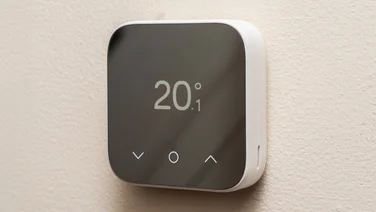To help us provide you with free impartial advice, we may earn a commission if you buy through links on our site. Learn more





- Lots of capacity
- Smart suitcase design
- Clever solar panels
- Heavy and noisy
- Expensive
Going off-grid no longer has to mean going without all your mod cons and gadgets (even if some might say that’s the whole idea). With the new breed of heavy-duty power banks and solar generators, you can head off for a week or more in the wilderness and keep everything powered or topped up, relying on mains power stored in an array of high-capacity batteries combined with regular top-ups from the sun.
Power-banks and solar generators don’t get much more heavy duty than the Anker PowerHouse 767. This 30kg monster has a whopping 2.04kWh capacity and can output up to 2,400W of power via a combination of three 240V AC outlets, dual 12W car sockets and five USB ports. Forget just recharging your smartphone; this device is beefy enough to handle laptops, TVs, camping fridges, heaters and even your coffee machine.
Anker PowerHouse 767 review: What do you get for the money?
The PowerHouse 767 is a sizable unit the size of a small suitcase, although at 30kg you wouldn’t want it as your cabin bag. To make it a bit more portable, Anker has fitted a pair of chunky wheels in one corner and a pull-out carrying handle on the one diagonally opposite, meaning you can wheel the PowerHouse 767 around on level ground if you need to. That’s not a bad idea, as you probably don’t want to lift it more than you have to.
The front houses all the outputs, along with a soft-glow light bar – which is handy for seeing what you’re doing in the dark – and a large colour LCD display, which gives you the current capacity as a percentage and the total watts coming in and going out. Below the screen, you’ll find three 240V AC sockets, two 12V car sockets beneath a rubber flap, two USB-A and three USB-C charging ports. The USB-A ports will output 12W, while the USB-C ports are good for 100W USB-PD. That’s enough for most modern smartphones, tablets and even most laptops to charge at their maximum rate.
The input sockets are at the rear, with an AC connection for the mains lead and an input for a solar panel – or up to four if you use the adaptor provided. There’s also an additional socket below to connect to an optional expansion battery.





The PowerHouse 767 uses a bank of lithium iron phosphate batteries, designed for high safety levels and long lifetimes. Anker states that they’re expected to last for up to 3,000 charge cycles or the equivalent of ten years’ use.
There are multiple options when buying the 767: the generator itself can be purchased for £2,199 and solar panels can be added for an additional £500 each, up to a total of two.
READ NEXT: Best home EV chargers
Anker PowerHouse 767 review: What do we like?
There are two ways to get charge into the PowerHouse 767. The easy but expensive way is from the mains. Connect it to a mains outlet and it will take an hour to reach 80% capacity or 90 minutes to reach full charge. The free, but slower, way is via solar energy, using one to four 200W solar panels.
These are well designed, folding up nearly for carrying or storage with a chunky handle, then unfolding into a strip of four panels just over 2m long. Three of the panels have clever two-part kickstand supports with bars that hold the panel at 40˚, 50˚ or 60˚ angles, making it easy to get the perfect tilt and position to harvest the maximum sunlight.





As with all solar panels, the angle, position and finding a shade-free area will make a big difference to how much power you can feed into the power bank. On a sunny day I saw each panel outputting 197W. At that rate a single panel will charge the PowerHouse 767 in 13 hours, while with two, it will charge in seven hours. However, if you put the panels in the wrong position or partially in shade, this can drop to 120W, 85W or less, so you need to try different positions for maximum energy, which can be done using the screen on the battery for guidance. Also bear in mind that you won’t get full recharge if it’s an overcast day.





The PowerHouse 767 has two big advantages over rival solar generators such as the Jackery 1500 Pro. First, it can handle more demanding appliances; it wasn’t fazed when we plugged in the 2kW ceramic heater we use for testing, although it was too much for the 1500 Pro. Second, it has more capacity. With 2.04kWh on tap, the 767 was able to keep the heater running at its 1.17kW setting for 93 minutes, where the Jackery ran out of puff in 62 minutes. That’s a really intense workout, too, so expect the performance to be better with a typical mixed load of laptops, tablets and smartphones running over longer periods, with more demanding TVs or kitchen appliances running for an hour or two.
Anker PowerHouse 767 review: What don’t we like?
Even with its ingenious design, the PowerHouse 767 is big and heavy. The wheel helps a lot when you have a hard surface to drag it across but, on softer ground, it’s still easier to pick it up and lug it around the old-fashioned way. You’re going to feel it if you do.





It’s also pretty noisy when the fans spin up. This only happens when you’re charging it up or when you’re powering something big, but sound levels can reach 43 to 46dBA at peak – about the same as a desktop PC or gaming laptop.
Anker PowerHouse 767 review: Should you buy one?
At over £2,000 just for the main unit and over £3,000 with two solar panels, the PowerHouse 767 is a big purchase and, for many, it’s going to be overkill. If so, the Jackery Explorer 1500 Pro is significantly cheaper, not to mention significantly lighter and easier to transport.
Yet in terms of its capacity and ability to power just about anything, the Anker PowerHouse 767 is in a different class. It’s quick to charge, well made and highly capable, and worth the extra if you plan to spend extended periods of time away from a mains socket. It’s also a whole lot quieter and more eco-friendly than the equivalent petrol generator. Looking for a heavy-duty mobile solar power source? This is the one to buy.







